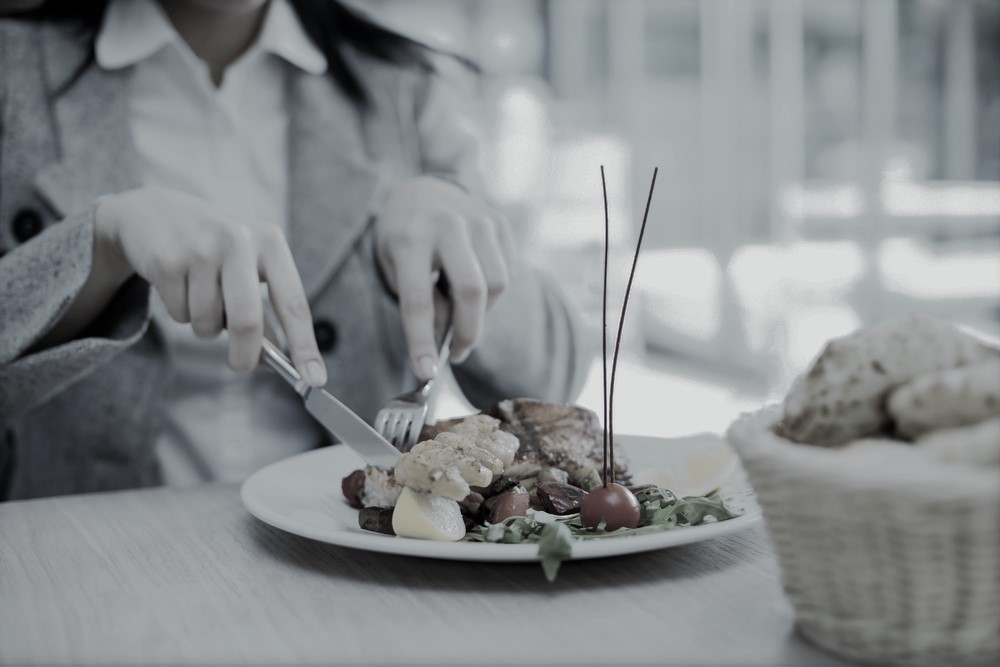Preparing Your Restaurant For Solo Diners
Originally Posted on FoodableTV by Doug Radkey – 11/30/17
The dining scene has surely changed over the years. One of the many noticeable differences is the acceptance of the “solo diner.” Single (or solo) diners are no longer strictly targeting the quick-service restaurant or getting take-out to fulfill their desire and need to eat.
Many of these individuals, which are no longer just business travelers, are now looking for unique dining experiences at casual or even fine dining style restaurants.
For years, many solo diners preferred ordering in because they felt awkward to eat alone at restaurants, while restaurateurs preferred to fill their tables with two or more guests. Eating out alone, however, can now be a memorable social experience and many restaurateurs are starting to take notice and adjust their operations accordingly.
From single demographics and business travelers to even married individuals who are simply looking for some ‘alone time,’ restaurants are provided with an opportunity to generate a niche driven revenue stream from this segment, if they’re properly prepared.
If the latest forecasts from Euromonitor are indeed true, “there will be more than 330 million people in the ‘developed world’ who will be living alone by the year 2020. That’s a 20 percent increase in less than a decade.”
Equally, data from Open Table shows “the majority of solo dining reservations are booked for dinner (43 percent) followed by lunch (30 percent). Solo diners also book the majority of their tables Monday to Friday (78 percent), saving the weekends for dining with others.”
Catering to solo diners takes some adjustment, an open mind, and specific training. Let’s have a look at a variety of ways restaurants can begin to take advantage of this growing opportunity.

1. Welcoming the Guest
One of the easiest ways in which a restaurant can make a solo diner feel unwelcome is at the time of entering the restaurant. When someone walks in solo, staff should never ask ‘are you dining alone?’ or ‘table for one?’ especially at a volume that other guests may overhear.
You want to seat them where they can see what is going on. The guest may be lonely and want someone to talk to. Be friendly, but don’t neglect other guests. With nobody to talk to, time seems long (though smart phones help), so it’s ideal to serve them as efficiently as possible, without rushing their service. Invest in Wi-Fi and provide solo diners with a password as soon as they sit down. This could be the servers’ most critical guest of their shift.
2. Seating Strategies
When planning a new restaurant layout or adjusting your current one, keep in mind solo diners. Consider table optimization or the use of communal tables and high-tops for these guests. At the same time, you want to consider their view as a high percentage of guests would rather choose to sit near points of interest, such as a window, featured wall (near fireplaces or wine racks, for example) and not just near the exit, kitchen door, or washroom for example, as many restaurants have done in the past.
Some solo diners may prefer quiet and privacy, but many are now open to enjoying a meal at a communal table with other solo diners or even learning a few things from the bartender or chef, while sitting at the bar. Either way, know your concept, know your demographics, know your square footage, and adjust accordingly to maximize on your Restaurant Revenue Management (RRM).
3. Elevating the Bar
If the restaurant has a bar, consider this as a potential seating arrangement for solo diners. Pending the concept, bars are becoming less and less just for beer, cocktails, or shots. With the correct setting and chair style; the solo diner, who should be able to order everything off of the restaurant menu right at the bar, will be able to enjoy a meal, converse with the bartender, people watch, and enjoy a memorable experience without looking across at an empty chair. A nice place setting at the bar can in fact, be more enjoyable for solo diners and be more profitable for the restaurant, than that of a traditional table, with a correctly engineered menu.
4. Create a Tasting Menu
How often do we see fantastic pairings and unique menus, for couples or larger groups? There are rarely any meal deals for solo diners at casual or fine dining restaurants. These individuals should not be treated any differently than a table for two, and in fact, solo diners may spend nearly as much as a table for two. Ensure there are appetizers, entrees, and desserts that are geared toward solo diners and/or create tasting menus with the solo diner in mind while pairing the food accordingly with offered beverages.
5. Serving Single Guests
Customer service training is extremely important, for any guest, but arguably more so, for the solo diner. Though solo diners are rarely ‘alone’ anymore thanks to smart-phones, service staff must still make it a point to serve them efficiently. Service staff must not assume that solo diners will not appreciate an up-sell, another drink, or that the guest is a simple ‘one and done’ visit. Service staff must still make it a point to give the diner time and not rush them to flip the table for a larger party. Make it a point as an owner, operator, or manager, that each staff member understands the importance of a solo diner.
Restaurants can no longer assume that solo diners mean less revenue. The numbers don’t lie; the frequency of these visits is only going to increase. With the right method of planning and adjustments to seating, bar design, menu engineering, marketing, and customer service training, solo diners may indeed, improve your restaurants bottom line!
